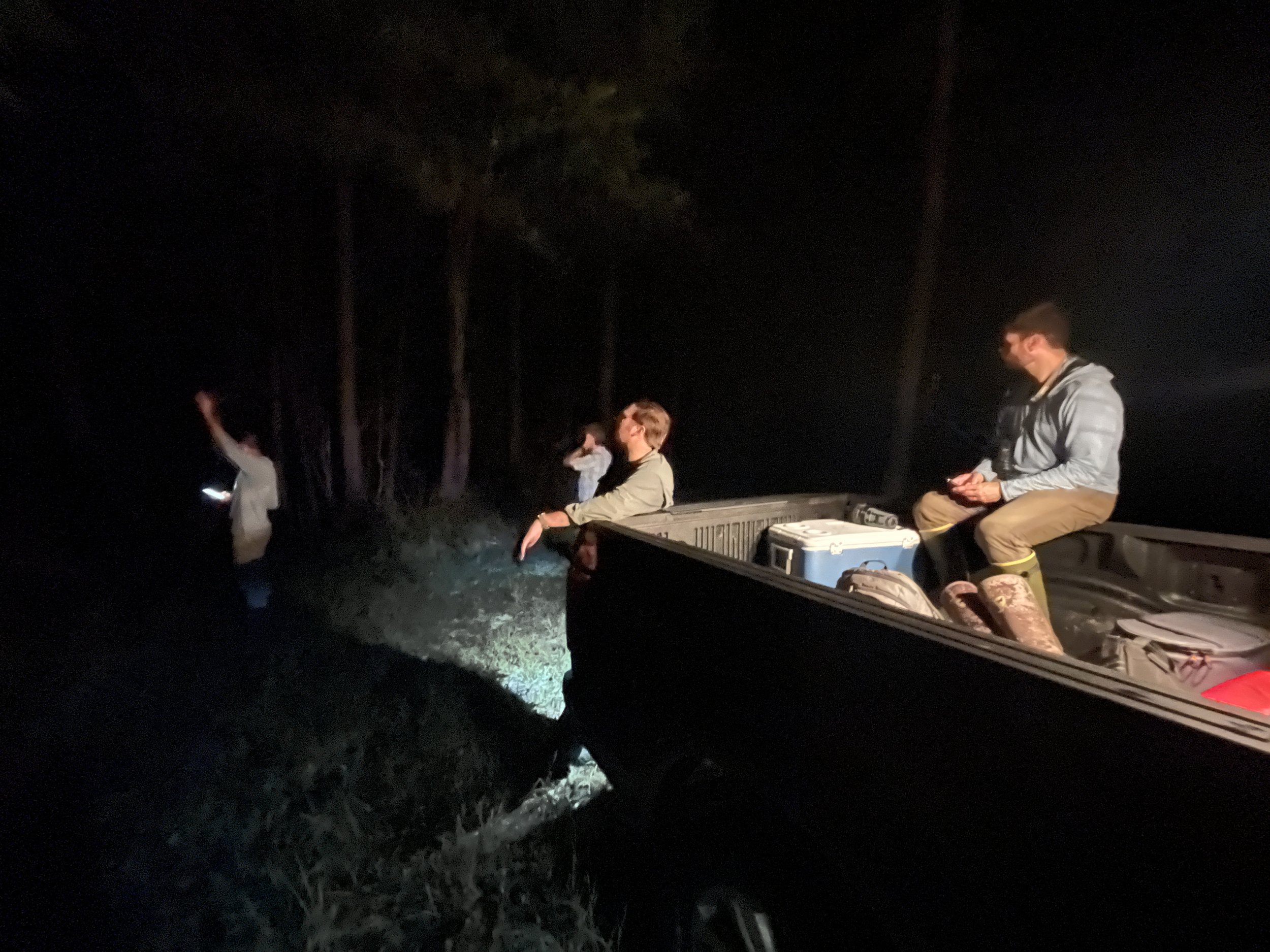2022 Big Day recap
On Monday, May 2, the Delta Wind Birds team of J.R. Rigby, Hal Mitchell, Andy Bell, Nick Lund, and myself conducted a Mississippi Big Day, restricted to the coastal counties (Hancock, Harrison, and Jackson). As always, our Big Day was conducted as a “bird-a-thon” for Delta Wind Birds, raising funds for DWB’s conservation work by collecting, in advance, pledges “per species” that we would find.
After two years of focusing our Big Day efforts in our local counties, necessitated by the COVID-19 pandemic, we were excited to get back to making serious attempts to discover how many species could be found in the state of Mississippi in a 24-hour period (for recaps of our previous efforts, including a new record set in 2018, see these links: 2015, 2016, 2017, 2018, 2019).
The biggest change for 2022 is that we decided to stick entirely to the three coastal counties (from west to east: Hancock, Harrison, and Jackson). In all previous attempts, we had begun our Big Days at midnight in the capitol city of Jackson, targeting species that could not easily be found on the coast such as Eastern Phoebe, and seeking marsh birds at the Pipeline Road site on Ross Barnett Reservoir. That strategy worked well for us in some years (including 2018), but we always dreaded the graveyard drive to the coast from 2-5 a.m.. And in 2019, Pipeline Road let us down, with bullfrog noise and other more mysterious factors causing us to miss some key species. So, in 2022, we made the decision to stick the coast, which would hopefully result n more time birding and less time driving, which we hoped would make up for (almost certainly) missing a very small number of species we could not find on the coast, such as the Phoebe.
So, we started at 1:00 a.m. at a farm in northern Hancock County, where we were able to tally some nocturnal migrants (most notably our only Veery and Swainson’s Thrush of the day) by ear, and then headed to some new freshwater marsh sites not previously available to us, where we found almost all the wetland species we had hoped for at night (e.g., King Rail, Least Bittern, and Pied-billed Grebe). We then spent most of the rest of the morning at a few key spots in Hancock County (especially Spence’s Woods and Ansley). Unfortunately, Spence’s Woods was good but not great—we got all the breeding warblers we hoped for, but missed some key breeding species such as Acadian Flycatcher, Wood Thrush, and Pileated Woodpecker, and no migrant songbirds were present. And our visit to the oak cheniers at Ansley, one of our two main migrant traps for the day, made it clear that songbird migration was likely to let us down on the day—we picked up only two migrant warbler species there (N. Waterthrush and Magnolia Warbler), our only ones of the day. And we probably waited too long for the Bronzed Cowbird to show up at Ansley, putting us behind the clock. But then efficient stops for Seaside Sparrow, Cave Swallow, and Painted Bunting got us back on track, and we headed east into Harrison County with 107 species under our belts.
Harrison County was a mixed bag, with Jones Park producing a few key shorebirds such as Marbled Godwit, Clower-Thornton Nature Trail yielding two important hawk species (Cooper’s and Broad-winged) but zero new migrant songbirds, and the old Broadwater Sun golf course boosting us with quick ticks of Western Kingbird and Cedar Waxwing. Jackson County was initially good to us, with a very productive stop at the Seaman Road Sewage Lagoons (freshwater shorebirds! Lesser Scaup! Sandhill Cranes!), but our coastal shorebird spot was not as productive as in previous years, and a few other stops yielded low numbers of new species relative to time invested. In the end, we had an exciting day, and tallied a total of 154 species. For a complete list of the species we found, and a map showing the locations we visited, you can visit our Trip Report on eBird here:
https://ebird.org/tripreport/53300
Our total of 154 was well short of the current Mississippi Big Day record of 179, set by our team in 2018. Indeed, it was our lowest total since we began trying these statewide Big Days back in 2015. So, what happened?
First, the good news: We found 9 species this year that we missed in 2018, including some nice rarities such as Neotropic Cormorant and Western Kingbird, some rare coastal breeders such as Cave Swallow and Gray Kingbird, and some can-be-tough-to-find-on-a-big-day species such as Cedar Waxwing and Seaside Sparrow. By focusing only on the coastal counties, we were able to greatly reduce total driving time (our previous route started in Jackson and required a drive to the coast between 2am and 5am), and we incorporated some new, very productive sites in Hancock County. And we were able to find almost all of the species we normally got pre-dawn in the Ross Barnett Reservoir area (e.g., King Rail).
Unfortunately, we also missed a whopping 34 species that we found in 2018. The main reasons?
1) Songbird migration was almost completely absent. We did not give ourselves maximum flexibility on choosing the date (which can mean that the weather conditions were not optimal; however, we had a nice storm system hanging over the coast the day before), but reports from the Mississippi coast the entire spring have indicated a strange and low-diversity songbird migration, likely due to the prevailing east winds over the Gulf of Mexico. These winds have pushed Florida migrants such as Cape May Warbler and Black-throated Blue Warbler west into MS, but pushed many of our normal migrants further west into Texas. As a result, we had only 11 total warbler species, only two of which (N. Waterthrush and Magnolia Warbler) were transient migrants. We also missed other key migrants such as Scarlet Tanager, Baltimore Oriole, and Gray-cheeked Thrush.
2) Very few wintering birds lingered, compared to previous years, so we found few diving ducks (Red-breasted Merganser being one of our bigger misses), few sparrows (missing Swamp Sparrow most notably), and no other winter lingerers like Ruby-crowned Kinglet, Virginia Rail, Bonaparte's Gull, and Northern Harrier. This is just bad luck--some years, these kinds of wintering birds hang around longer.
3) Our preferred dawn spot for bottomland breeding birds, Wade-Vancleave Rd over the Pascagoula River, was inaccessible due to major bridge repairs. Instead, we started at Spence's Woods on the Pearl River. This site was pretty good, but we missed some key breeding birds there (such as Wood Thrush, Pileated Woodpecker, Acadian Flycatcher), only some of which were made up using an extra stop at Ward Bayou WMA later in the day, which of course took time away from birding other spots.
4) Around a half dozen key species were present during scouting on May 1st, but absent on May 2nd, including some tricky but important shorebirds on our target list, such as American Oystercatcher and White-rumped Sandpiper. Sometimes that's just how it goes.
5) Late-day route inefficiency: Late in the day, after it became clear we would not be breaking any records, we made some inefficient route choices that we would not have made otherwise. For example, we decided to drive to Bellefontaine Road to look for the Gray Kingbirds nesting there, even though it is quite out of the way, and it was unlikely the oaks there would reward us with migrants to make it worth it. We also visited an unscouted site looking for American Coot and Bank or Tree Swallow, late in the day, and (besides not yielding the Coot or swallows) it caused us to arrive at our longleaf pine site too late for Red-cockaded Woodpecker.
So, it was a bit of a perfect storm that resulted in our lowest MS Big Day total ever. But we did manage to have a blast, and we also learned a LOT. This is the best thing about conducting a Big Day--it forces you to learn so much about where and when birds occur, and how to efficiently find them (see this great article from Pete Dunne that makes that same point). This was our first time trying the strictly coastal Big Day, and we definitely feel it has a TON of potential in a good migration year. Next time, we'll be much more efficient, having been through it once, and will almost certainly have better luck.
We'll be back next year to try again! In the meantime, we're already scheming to improve next year's effort.








